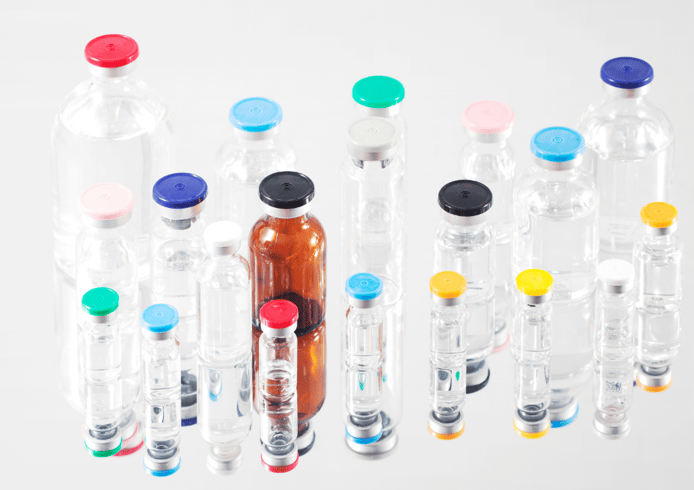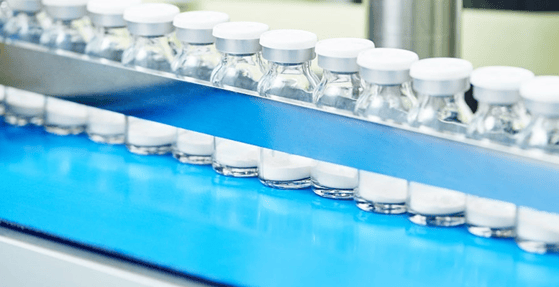Share this
Quality Standards for Vial Sealing: A Technical Perspective
by Ewan on Feb 2, 2024 11:11:04 AM
Effective sealing of pharmaceutical vials is a crucial step in ensuring the integrity and safety of sterile products in the healthcare industry. The different closure systems used, such as flip-off caps, aluminum crimps, and overseals, all play a critical role in maintaining the quality of the pharmaceutical substance within the vial. In this article, we will delve into the technical aspects of vial sealing and the quality standards associated with this procedure.
Understanding the Technical Aspect of Vial Sealing
Before delving into the specifics of closure systems for vials, it’s necessary to recognize the essential role that vial sealing plays in pharmaceutical manufacturing. Ensuring the integrity and sterility of pharma products is a complex process involving quality control measures, precise techniques, and high-quality equipment.
Vial sealing is not only fundamental to ensure the sterility and purity of the pharmaceutical product but also serves as a critical barrier against the external environment that can expose the substance to contamination. Vial sealing is a cornerstone of maintaining the efficacy and safety of sterile liquid formulations within the healthcare and pharmaceutical industries.
The Different Closure Systems for Injection Vials

Injection vials are commonly sealed using closure systems that involve aluminum crimps or flip-off caps. The closure systems are designed to securely seal the vials and provide a tamper-evident feature to assure product integrity and ultimately patient safety. Below, we list the most common seals used for injection vials and the process associated with each design:
- Flip-Off caps: Caps that combine the aluminum and plastic design and are typically offered in two different models: push-off caps and push-tear-off caps. The crimping process of flip-off caps requires machinery designed to precisely deform the aluminum cap of the flip-off cap around the vial’s neck.
- Aluminum caps: The aluminum caps involve the use of specialized machinery as well. The aluminum crimping process demands precision to achieve a tight and secure seal while maintaining the sterility of the pharma product inside the vial.
- Crimp craps: this notion comprises aluminum caps and Flip-Off caps. Crimp caps are overseals, utilized in conjunction with a sealing process called crimping. This technique involves deforming the aluminum cap around the vial’s neck to create an airtight and leakproof seal. The crimping process of crimp caps must be tightly controlled to avoid under- or overcrimping as this could compromise the integrity of the seal.
Key Quality Standards of Vial Sealing
Maintaining sterility throughout the entire vial sealing process – especially on vial filling lines where the vial crimping process is performed inside the aseptic core - is a fundamental quality standard in the pharmaceutical industry. Streamlined techniques, including the use of cleanrooms, sterilization protocols for equipment, and consistency in the handling of components are crucial. Any breach in quality standards during vial sealing can comprise product sterility and ultimately, the product’s efficacy and patient safety. A strict protocol on quality controls is necessary for quality assurance.
Precision and Consistency in Crimping
Maintaining a consistent crimping process is critical. Quality standards dictate the specific measurements and tolerances for the crimping tools and equipment to ensure a consistent sealing process across the different vials and seals. Any divergence from the quality standards could lead to compromised seals, risking contamination or loss of efficacy of the pharma product.
Sterility Assurance
Sterile vial sealing requires strict and consistent techniques. Any contamination during the sealing process can cause the entire batch to be unusable. Quality standards for sterility assurances instruct for a controlled environment, including cleanrooms and validated sterilization methods.
Leakage and Integrity Testing
Quality control measures include rigorous testing procedures to assess the integrity of seal vials, including container closure integrity testing (CCIT). Leak tests, visual inspections, and other non-destructive testing methods are employed to detect any potential issues with the vial seals. The testing ensures that the pharma product remains safe and effective for patient usage.
Regulatory Compliance in Vial Sealing
The pharmaceutical industry operates within a framework of strict regulations and compliance set by regulatory bodies worldwide. The vial sealing process is no exception as it directly impacts the quality, safety, and efficacy of medical products. Regulatory agencies such as the FDA (Food and Drug Administration) and EMA (European Medicines Agency) enforce guidelines that all manufacturers must comply with the ensure the integrity of vial closures.

Meeting Regulatory Requirements
Manufacturers must align their vial sealing processes with GMP (Good Manufacturing Practices) and other regulatory standards. This involves strict documentation procedures, equipment validation, and adherence to specific protocols for vial sealing. Audits assess whether the standards are met for each manufacturer to ensure that all vial sealing practices are consistently upheld.
Validation and Qualificatifaction Processes
Before any manufacturer can start their vial sealing procedure, extensive validation and qualification processes are undertaken. This involves thorough testing that confirms that the sealing method meets the specifications and standards. Testing and evaluation of different components include pressure, temperature, and time.
Traceability and Documentation
Regulatory compliance also demands record-keeping and traceability throughout the entire vial sealing process from all manufacturers. This includes detailed records of material used, equipment calibration, batch information, and more.
Conclusion
Vial sealing demands a combination of technical precision, adherence to strict quality standards, and a comprehensive understanding of the entire closure system. Meeting all of the industry standards ensures sterility and integrity of pharmaceutical products. This is a cornerstone of safeguarding patient safety and maintaining the efficacy of medical treatments.
Concluded, the process of vial sealing is a fundamental part of pharmaceutical manufacturing, whether it's through flip-off caps, aluminum caps, or crimp caps. The process is strictly controlled by high quality standards and regulatory controls, which is necessary to ensure patient safety. As technology advances and regulatory requirements keep on evolving, continual advancements in vial sealing techniques will remain necessary

No Comments Yet
Let us know what you think